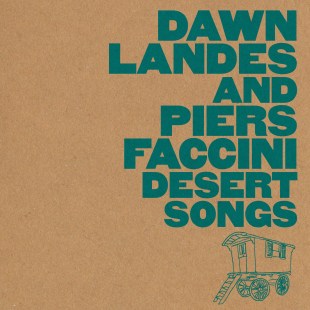 Desert Songs, the collaborative EP from Dawn Landes and Piers Faccini, has been a long-time coming. The two musicians first worked together on a track for Faccini’s record Songs I Love. Afterward, Landes and Faccini performed together near the latter’s home in southern France. Those two interactions convinced both artists that a collaboration would be fruitful, and a few months later they regrouped to record what would become Desert Songs.
Desert Songs, the collaborative EP from Dawn Landes and Piers Faccini, has been a long-time coming. The two musicians first worked together on a track for Faccini’s record Songs I Love. Afterward, Landes and Faccini performed together near the latter’s home in southern France. Those two interactions convinced both artists that a collaboration would be fruitful, and a few months later they regrouped to record what would become Desert Songs.
With inspiration from the early Christian Desert Fathers and Sufi mysticism alike, the record Landes and Faccini have produced a delicate, ethereal record that still feels substantial. Landes and Faccini’s voices float above a variety of instruments, including: kora, resonator guitar, and Indian dulcimer, among others.
The EP’s five songs are all quiet, folk tracks. With their understated instrumentation and emphasis on vocals, the songs bear some resemblance to the music of the British folk revival from the ’60s, a fact that should perhaps be unsurprising given the artists’ history with folk music and that Faccini has recorded a version of “The Snows They Melt the Soonest.”
All in all, Desert Songs provides five gorgeous, if melancholic, songs from two great artists. We can only hope the two continue to record together.
Dawn Landes & Piers Faccini’s Desert Songs is out now as a digital-only release via Six Degrees Records. The EP is available on Amazon and iTunes,


